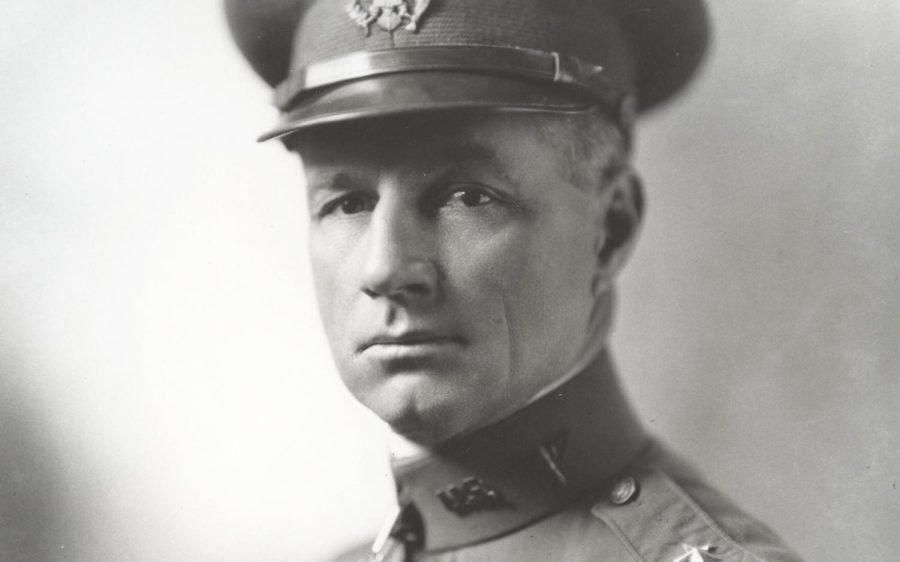Historically Speaking: The court martial of an aviation visionary
October 15, 2022
Aviation pioneer Brig. Gen. Billy Mitchell correctly predicted what lay ahead in 20th Century warfare, but at great personal cost. His vision into the future cost him a career in the Army Air Corps. As early as 1912, Mitchell predicted the strategic implementation in future wars would take place in the air, and not on the ground. This was nearly a decade before World War I.
William “Billy” Mitchell, born Dec. 29, 1879, was an Army Air Corps one-star general who today is regarded the father of our United States Air Force.
In March 1912, Mitchell toured battlefields of the Russo-Japanese War and concluded that a future war with Japan would be a reality.
Mitchell served in France during World War I and, by that conflict’s end, commanded all American air combat units. After the war, he was appointed deputy director of the Army’s Air Service. He began advocating increased investment in air power, believing this would prove vital in future wars. He argued particularly knowing the ability of bombers to sink battleships.
 In 1921, to test his theory, Mitchell organized a series of bombing runs, sinking captured obsolete German ships. The demonstration was agreed to by Navy admirals. He had infuriated the Navy’s high command by claiming he could sink ships “under war conditions.” Mitchell boasted he could prove it if he was permitted to bomb and sink captured German battleships. The demonstration was a success.
In 1921, to test his theory, Mitchell organized a series of bombing runs, sinking captured obsolete German ships. The demonstration was agreed to by Navy admirals. He had infuriated the Navy’s high command by claiming he could sink ships “under war conditions.” Mitchell boasted he could prove it if he was permitted to bomb and sink captured German battleships. The demonstration was a success.
In 1923, Mitchell repeated the bombing tests with the same results on three obsolete American battleships, USS Alabama, USS Virginia and USS New Jersey. As a result, President Warren G. Harding and Navy officials were angry because the demonstration showed U.S. Naval weakness.
The bombing demonstration antagonized many administrative leaders of the Army with his arguments and criticism. In 1925, due to his outspoken predictions, Mitchell was reverted from appointment as a brigadier general to his permanent rank of colonel. His naval bombing tests caused budgets to be redrawn for further air development and forced the Navy to look more closely at the possibilities of naval air power by building more aircraft carriers.
Ironically, one of Mitchell’s predictions: there would be a future surprise attack on the Hawaiian Islands by the Empire of Japan.
Mitchell became an embarrassment to both military and civilian leaders. In October 1925, he was court-martialed for “insubordination” because he accused Army and Navy leaders of having an “almost treasonable administration of U.S. national defense” by investing in Navy battleships instead of aircraft carriers.
The court martial lasted for seven weeks. The youngest of the 12 judges was Maj. Gen. Douglas MacArthur, who voted for acquittal. He described sitting as a judge on Mitchell’s court-martial as “one of the most distasteful orders I ever received.” However, the majority found Mitchell “guilty of all specifications of the charges.”
The court suspended Mitchell from active duty for five years without pay, which President Calvin Coolidge later amended to half-pay. He resigned from the air service shortly afterward.
General MacArthur said: “… a senior officer should not be silenced for being at variance with his superiors in rank and with accepted doctrine.”
Ironically, that was a stance he would take decades later that would prove to be MacArthur’s undoing. Had he not been a hero from leading Allied troops against the Japanese in World War II, and the Korean conflict, MacArthur might, himself, have experienced a court martial much like Mitchell’s because of his conflicts with then President Harry S. Truman.
As consolation after court martial, the aviation visionary began receiving many accolades, albeit most of them after his death on Feb. 19, 1936.
President Franklin D. Roosevelt recommissioned Mitchell posthumously to a rank of major general (two stars). He also is the first and only individual for whom a military aircraft, the North American B-25 “Mitchell bomber,” is named. Ironically, a squadron of the twin-engine aircraft was used by Army Col. Jimmy Doolittle’s famed 1942 raid over Tokyo six months after the Pearl Harbor attack.
Mitchell accomplished his goal of making the American public aware of the dismal state of U.S. air power. After his trial, his pilots saluted him in dramatic fashion. As Mitchell stepped out of the court martial building, he looked up to see a squadron of four biplanes in flight. Of course, such a scene may or may not have happened.
Following his death, Mitchell received many honors, including a Congressional Gold Medal. Additionally, Milwaukee’s Mitchell International Airport is named in his honor.
In Air Force circles today, Mitchell is regarded as a hero, legend, and the father of the U.S. air power.
His criticisms of high-ranking Army and Navy superiors cost him his career but arguably saved our woefully unprepared nation from embarrassing setbacks during World War II. In the late ’30s, aircraft production began at a rapid pace, providing modern combat fighters and bombers. If General Mitchell had not sacrificed himself by putting a spotlight on U.S. unpreparedness, the outcome of the war could have been much different.
Tom Morrow is a longtime Oceanside-based journalist and author.
Columns represent the views of the individual writer and do not necessarily reflect those of the North Coast Current’s ownership or management.





